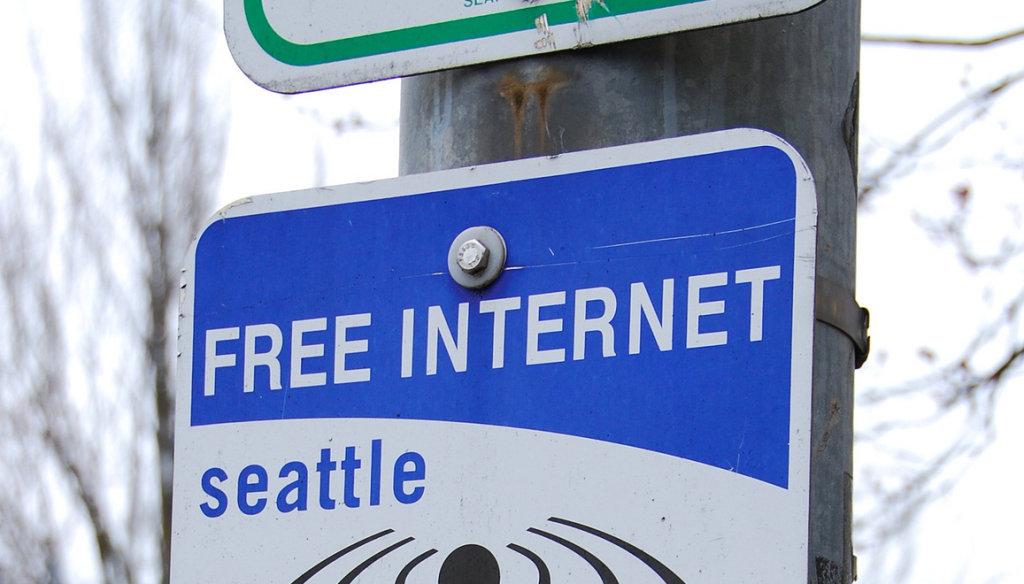The Net Neutrality Rule Is Dead. So How Can The FCC Fix Net Neutrality?

(afagen)
This morning, a federal appellate court vacated FCC rules guaranteeing net neutrality, effectively giving Internet service providers the right to throttle data speeds and demand premium rates from content providers. So your ISP has a service that competes with Netflix? It can (and probably will) get preferred treatment. Companies like Netflix that eat up bandwidth? They had better be prepared to pay the piper. It would essentially mean the end of the Internet was we know it, but is it a done deal?
In the wake of the ruling, advocacy groups are calling on the FCC and its chairman Tom Wheeler to take action to protect consumers.
All of which leads to the key question: if the net neutrality rule is broken, and we need a rule like it in order to use the Internet, how can the FCC fix it?
The way forward may lie in the details of the ruling handed down today. The ruling found not that the idea of net neutrality was without merit, but rather that the specific rule in place wasn’t in the FCC’s regulatory scope under current law.
The problem goes back to the 1990s, when home broadband connections first began to appear and politicians and government agencies had to figure out what to do with them. The result was the Telecommunications Act of 1996 [PDF].
Under section 706 of that Act, the court found, the FCC does indeed have the authority to “enact measures encouraging the deployment of broadband infrastructure.” So yes, the FCC can regulate broadband, in a general sense. After that, it gets tricky.
The Telecommunications Act has two different categories of services in it. One category covers telecommunications carriers–the company that runs the wires to your house–and the other covers information-service providers. Way back when, these would have been different entities: one company ran the phone lines on your street, which you then used to dial in to a different company, like AOL or Prodigy.
Telecom companies were prohibited, as common carriers, from restricting what traffic they carried. In other words, your local phone company couldn’t say, “You aren’t allowed to dial AOL from your home phone; you have to use our service instead.” The same rules were found to apply to DSL connections as to basic land-lines.
But then came our current version of the Internet age, where cable companies started to become the major home internet providers. When it came time for the FCC to figure out how to regulate those connections, they took a different approach:
Instead of viewing cable broadband providers’ transmission and processing of information as distinct services, the Commission determined that cable broadband providers—even those that own and operate the underlying last-mile transmission facilities—provide a single, integrated information service.
Cable broadband providers, therefore, are legally not considered telecommunications carriers. And if they’re not telecom carriers, they aren’t subject to the common-carrier telecom standard.
So there’s the rub. As for a solution, there are two basic approaches: either change the classification of broadband ISPs, or change the law that limits the FCC’s ability to regulate them under their current classification.
Either approach is likely to meet with challenges. As even the Wall Street Journal dryly notes, an attempt to increase regulation in the current environment is sure to face “political headwinds.”
There is a proposed bill currently sitting with the Senate Commerce Committee that would make it “unlawful for a designated Internet service provider to engage in unfair methods of competition or unfair or deceptive acts or practices, the purpose or effect of which are to hinder significantly or to prevent an online video distributor from providing video programming to a consumer.”
If that bill were to become law (current odds: 10%), Netflix would be safe… but the narrow scope, relating specifically to online video, would leave ISPs quite a lot of wiggle room.
In a statement issued after the ruling, Verizon claimed that, “today’s decision will not change consumers’ ability to access and use the Internet as they do now.” And it does seem unlikely that Verizon or any other company plans to flick a switch tomorrow while cackling madly, Snidely Whiplash-style.
But even in its ruling striking down net neutrality, the court found that broadband providers have both powerful economic incentives and the technology at hand to start favoring certain content over other content. The court also said that if consumers could easily pick up and switch ISPs, the market might resolve the issue–but that roughly 70% of households live in census tracts where only one or two broadband providers operate.
For the good of all consumers, then, the FCC needs to move quickly to clarify how exactly modern broadband companies are covered under the law. And as ever, but especially if the FCC takes its sweet time choosing how to act, consumers will only benefit from disruptive, truly competitive forces like fiber networks entering the fray.
Want more consumer news? Visit our parent organization, Consumer Reports, for the latest on scams, recalls, and other consumer issues.

